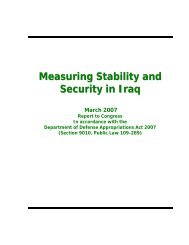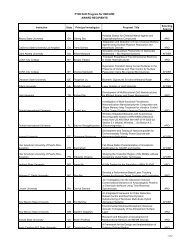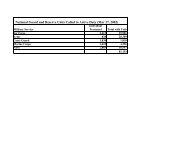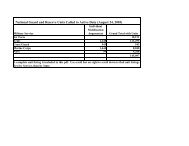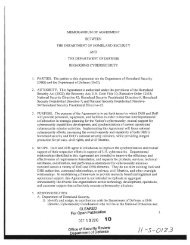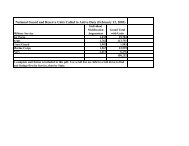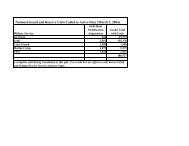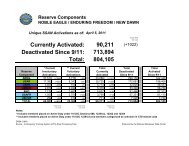Report - United States Department of Defense
Report - United States Department of Defense
Report - United States Department of Defense
Create successful ePaper yourself
Turn your PDF publications into a flip-book with our unique Google optimized e-Paper software.
UNCLASSIFIED<br />
Afghan Government. Currently, the systems and internal controls needed to both determine<br />
appropriate O&M spending levels and ensure that the amounts budgeted for O&M are deployed<br />
and disbursed for the appropriate activities, are uniformly deficient throughout the ministries.<br />
The Afghan Government must maintain this political will for reforms to grow internal capacity<br />
in order to sustain existing infrastructure. Improvements in capacity will support both the<br />
budgeting process for O&M costs, as well as the disbursement <strong>of</strong> the O&M budget throughout<br />
the year, thereby increasing the likelihood <strong>of</strong> sustainability for assets and service delivery.<br />
4.3: HEALTH<br />
USG assistance to the Afghan health sector, focused primarily on increasing access to health<br />
services to 90 percent <strong>of</strong> the population by the end <strong>of</strong> 2013 and reducing under-five and maternal<br />
mortality by 50 percent by 2015, is directly linked to impressive gains in national health<br />
indicators. Key positive results and connections to U.S.-supported programs are illustrated in the<br />
USAID and other donor-funded surveys. These include the Afghanistan Mortality Survey 2010<br />
(AMS), as well as the annual household survey <strong>of</strong> health status in the 13 USG-supported<br />
provinces. Survey data are especially pertinent, since the 13 provinces represent approximately<br />
51 percent <strong>of</strong> the current Afghan population.<br />
While this is significant progress, Afghanistan continues to have some <strong>of</strong> the poorest health<br />
indicators in the world. The health situation <strong>of</strong> women and children remains grim, particularly<br />
among migrant and rural populations, including people living in insecure areas. For example, 88<br />
percent <strong>of</strong> married women do not use any method <strong>of</strong> family planning, and only 56 percent <strong>of</strong> all<br />
Afghans have access to clean drinking water. High levels <strong>of</strong> chronic and seasonal malnutrition,<br />
and the widespread prevalence <strong>of</strong> infectious diseases, including polio (26 cases during 2012) and<br />
tuberculosis, continue to contribute to high levels <strong>of</strong> morbidity and mortality.<br />
To maintain and consolidate the gains made, and to move toward sustained efforts, USAID<br />
works in partnership with the Afghan government to reach four goals:<br />
1- Meet the immediate healthcare needs <strong>of</strong> the population by supporting the provision <strong>of</strong> primary<br />
healthcare services);<br />
2- Address the long term sustainability <strong>of</strong> the healthcare system by strengthening the capacity <strong>of</strong><br />
the Afghan Ministry <strong>of</strong> Public Health (MoPH) at the central and sub-national level;<br />
3- Improve the health related behaviors <strong>of</strong> individuals, families, and communities; and<br />
4- Increase demand and access to quality health products and services through the private sector.<br />
Key achievements and challenges<br />
In 2012, USAID continued to build government capacity at the central and provincial levels to<br />
better manage the delivery <strong>of</strong> quality health services, with a focus on strengthening leadership,<br />
resource management, monitoring, and policy and strategy development. For example,<br />
specialized technical assistance enhanced the Ministry’s Health Management Information<br />
Systems (HMIS). As a result, 91 percent <strong>of</strong> facilities in USAID-supported provinces reported<br />
data in the HMIS during 2012.<br />
167






